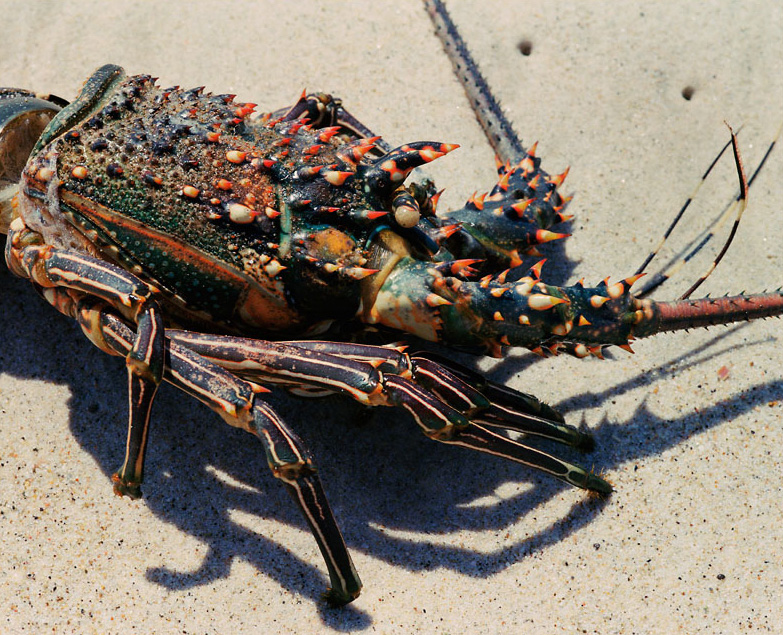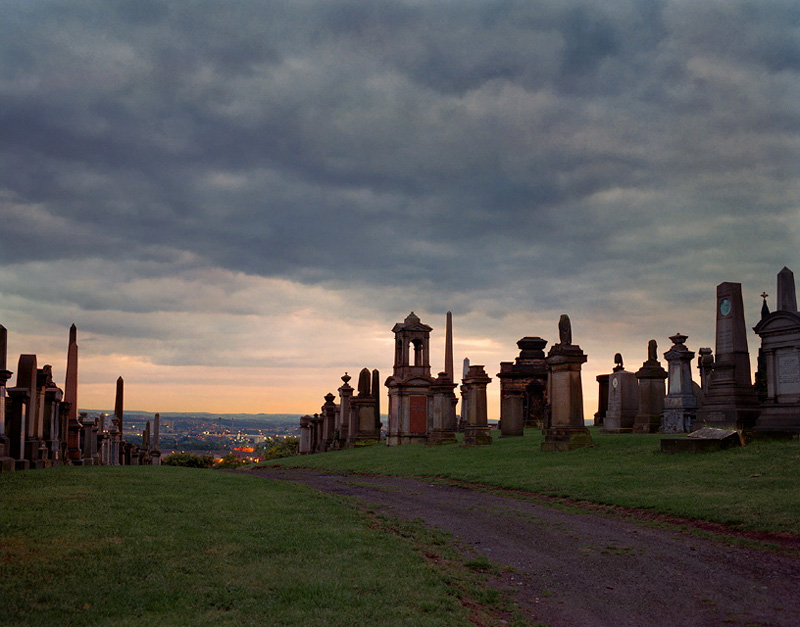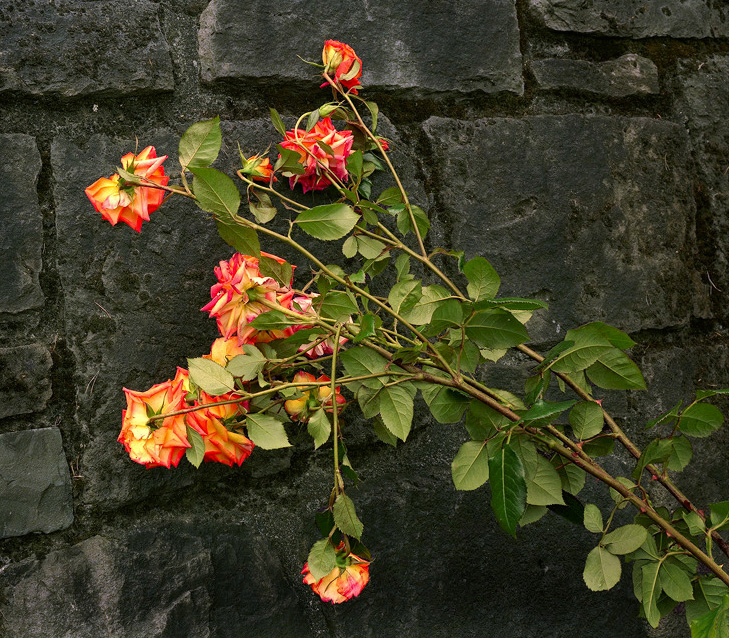 Lobster Carapace, Cabo Pulmo, Baja Mexico, 1991
Lobster Carapace, Cabo Pulmo, Baja Mexico, 1991
The short take: As you've read here, Ctein is closing his darkroom within the next year. Before he does, through the end of this year, he's taking one last round of orders for his dye transfer prints.
After the end of this year, you'll be limited to whatever he has an inventory. When he closes the darkroom, a lot of his photographs will go out of print. So if there's a particular photograph of his that you've been eyeing, this may be your last opportunity to get it.
There's something else. When he does close his darkroom down, sometime between the end of this year and the middle of next, he's going to be raising the prices on his remaining dye transfer prints substantially—a minimum of 40% and, in the case of the very last dye print of any particular photograph, as much as 300%.
Can this really be the end?
We've cried
wolf about this before. When Ctein had his first dye transfer sale here
on TOP, I made noises about how it might be your last opportunity to
own a real dye transfer print. That turned out to be wrong: a number of
former dye printers approached Ctein during and after the sale, offering
their unused materials to him, and, far from running out of paper, as
he expected, he actually ended the sale with more paper in stock than
he'd started with. He's now had a second dye transfer sale, and still
has some materials left.
This time there really is a wolf...we just don't know exactly how close the furry feller actually is. Ctein will run out of paper within the year and he's not looking for more (as he's written, he's even looking forward to that darkroom closing).
 Necropolis Overlooking Glasgow, 1995
Necropolis Overlooking Glasgow, 1995
Why a dye? Carl Weese's idea, from about 1996, was that B&W photography was already perfect, but that digital would represent the true coming-of-age of color photography. And thus it has come to pass. But of all the pre-digital color photographic methods, at least, dye was the aristocrat, a rare and damnably difficult-to-master process of almost unparalleled beauty.
In the 1990s, you could fit all the master dye transfer printmakers in the world into one living room. (I actually published that picture, in a magazine—sorry I can't show it to you.) Now, you could fit them all in a modestly-sized bedroom. Well, assuming they were good enough friends.
Ctein's prices may be bargains for dye transfer prints, but these aren't purchases everybody can enter into lightly, and he knows he isn't giving people a lot of time to make up their minds. To make your life a little easier economically, he's accepting layaways on orders, so people can pay for their prints gradually over a year or so instead of having to come up with a large chunk of money all at once.
Sometimes, there really is a wolf
So
anyway, that's the announcement: Ctein is coming to the end of an era,
and offering layaways on dye prints from his portfolio. There are info
pages with layaway and pricing details.
And here's a page where you can see all the pictures that are available.
Keep in mind you're not really seeing the prints in the JPEGs, unless you know how to "translate" from one to the other in your mind. I know I have a reputation for hating cat and flower pictures, but this one for instance is just gorgeous as a dye, let me tell ya.
Mike


sign of times. Would be good if you can do some pics before you close your darkroom. For what are photos if not for remember and see some beauty. There were some projects around about the disappearing darkrooms. But what pricks my curious is that I never saw a dye transfer here in Buenos Aires, Argentine. Usually, all the old process are very expensive here; well, the new ones are very expensive too, there are a lot of barriers to imported items. So, the only luxury process I saw one time was some reproductions of Sarah Moon. I don't know until today what were this magic.
I know, because I did a lot of work in the classical darkroom before, that the darkroom is a very special thing, at less for me. The darkness, the thinking before attack a white sheet of paper in a way that show respect for every sheet. The disasters, the glory when one arrives to something that one expected before. A lot of us used to play music and when I was young sometimes I have a friend at the side, most of the time girls. But the serious work I did were all alone, in the darkness, immersed in my own thoughts. Using my hands to develop some beauty.
Posted by: Hernan Zenteno | Tuesday, 17 July 2012 at 08:40 PM
"Patio with Trees and Puddles, NCAR, Boulder CO -- 1982"
Very neat photo. Might look very good on my wall...
link: http://ctein.com/ncarpat.jpg
.
Posted by: mcomfort | Tuesday, 17 July 2012 at 11:27 PM
I saw a few of Ctein's dye transfer prints in the living room of my late friend Günter Wehrmann. They were truly excellent in technical terms, the work of a master printer. Unfortunately Ctein's and my taste in subject matter are very different.
Posted by: Carsten Bockermann | Tuesday, 17 July 2012 at 11:44 PM
Necropolis Overlooking Glasgow, 1995
Going to great lengths to produce beautiful prints is admirable, but...
the first thing that I noticed about the above image was how far out of level the horizon appears to be. Perhaps Ctein could explain why he didn't trouble to correct this. Or maybe it is a gently sloping landscape.
Roy
Posted by: Roy | Wednesday, 18 July 2012 at 05:11 AM
Cteins's darkroom has retired more times than Brett Favre hehe.
Posted by: Player | Wednesday, 18 July 2012 at 05:57 AM
This entry reminds me of the days (early 70's) when dye transfers were pretty available, I worked for a photographer that specialized in beer photography and was in business with one of the areas best retouchers. They always got 20X24 dye tranfers made in Chicago to use as a retouching base, and until digital printing really got good, I never saw anything as close to the original transparency than dye tranfer prints. End of an era, but it's amazing how close high end digital printing can get to the transparency original, much different than the old C-print/interneg days.
Posted by: Tom Kwas | Wednesday, 18 July 2012 at 10:17 AM
Dear Player,
No, this is the one and only time. Where in the world do you get the idea I've previously said it was going to close down (other than at some indefinite future time)?
Sorry if that sounds prickly, but I want to be very clear about this with my readers and more importantly my clients. This is not some idle musing, this is not one of those things where one can opine, "Well, Ctein will change his mind." This is real.
pax / Ctein
Posted by: ctein | Wednesday, 18 July 2012 at 11:49 AM
Love that NCAR photo (we call it the "Escher trees").
Posted by: David Dyer-Bennet | Wednesday, 18 July 2012 at 12:31 PM
Hernan -
Sarah Moon's prints were made using the carbon printing process. It's similar to dye transfer except that the gelatin matrices are destroyed in the process of making a single print and can not be re-used. Instead of transferring a dye , there is actual pigment incorporated into the gelatin , and the gelatin and the pigment is transferred to the print. It is probably more archival than a dye print, getting any sort of control or consistency from print to print is problematic. Of course for Sarah Moon's work the idiosyncratic print quality and difficulty in making a reprint were selling points in an art market that values scarcity.
I think she was having her prints made from CYMK matrices for a while and there was something involving sawdust* during the process , but this is all from memory of chatting at an gallery opening in the late 1970's.
* google to the rescue, it's even weirder that than , she was having her prints made by the Fresson family using their eponymous process
http://books.google.com/books?id=PJ8DHBay4_EC&lpg=PA557&ots=ZQ5ULi1QLc&dq=sarah%20moon%20sawdust&pg=PA557#v=onepage&q=sarah%20moon%20sawdust&f=false
Posted by: hugh crawford | Wednesday, 18 July 2012 at 01:11 PM
No comment is a comment...
Roy
Posted by: Roy | Wednesday, 18 July 2012 at 03:09 PM
Dear Roy,
First there is a comment,
then there is no comment,
then there is.
pax / Donovan
Posted by: ctein | Wednesday, 18 July 2012 at 04:42 PM
would Ctein print one of my pictures as a dye transfer print?
Posted by: Michel | Wednesday, 18 July 2012 at 09:47 PM
This is interesting. I'm literally an antipodean. Drill through the Earth from CA and you'll probably pop up in my back yard. I've never seen a dye transfer print so I have no idea what you mean by the quality description. I've seen very, very good Cibas. Is it better than those? How much better?
Should I spend the money to find out by international order while there's still time? Or should I use the money (plus!) to go back to the Musee d'Orsay for a second look, or catch a Picasso travelling exhibition in Sydney or Canberra?
Or just buy another lens!
Posted by: Peter Croft | Wednesday, 18 July 2012 at 10:58 PM
While it might be the end of ctein's dye transfer printing, it is hardly the end of dye transfer printing in general. Interested parties should check dyetransfer.org. Jim Browning is doing dye transfers, and makes all his own materials, so it is likely he and others will continue indefinitely. His prices are cheaper.
Ed
Posted by: Ed | Thursday, 19 July 2012 at 08:48 AM
Dear Ed, Peter, Michel and others,
Quite correct about other people doing dye transfer. Apologies if we unintentionally created any misimpression that the entire process was going away. As Mike said, there are still a small group of us (soon to be them) left.
In fact, there are still a few folks around the world doing commercial dye transfer printing, even though I no longer do that. Jim Browning is one of them. I think Guy Stricherz up on Vashon Island still offers printing services, but I don't how to get ahold of him. In Germany, there's Bettina at Dye Transfer International
( www.dyetransfer.de/ ). Andy Cross (visualimpact@powerup.com.au) who runs Visual Impact Photography in Brisbane, Australia makes dye transfer prints; don't know if he does it commercially, but drop him an e-mail and inquire.
So far as I know, that's everyone left in the world doing commercial printing. There are probably another dozen or so folks dabbling in it for themselves.
Jim no longer makes all his own materials. At the moment, nobody is making the matrix film. Doesn't mean someone won't commission another run in the future. The dye transfer materials are primitive enough that, like tri-color pigment printing, they can be manufactured without a monstrous capital investment. I expect the dye transfer will hang around as a cottage industry for as long as anyone cares to do it. Much like you can get daguerreotypes, today.
As for Jim's prices being cheaper than mine, who cares? Buying art by the dollar makes as little sense as buying it by the pound or square foot. You buy art because you like it or you don't. If it's inexpensive art, then lucky you. If it's not, not so lucky. But there is no fair market price for art.
Over a decade, I distributed more than 1000 dye transfer prints at ridiculously low prices (average less than $100) so that people could see what dye transfer looked like and have a fine print for themselves without spending a fortune. I've done more than my share to make it available to people at super-affordable prices. Now I'm just selling my artwork. You like it, you pay my prices. You don't, you won't. That's the way of the world of art.
pax \ Ctein
[ Please excuse any word-salad. MacSpeech in training! ]
======================================
-- Ctein's Online Gallery http://ctein.com
-- Digital Restorations http://photo-repair.com
======================================
Posted by: ctein | Thursday, 19 July 2012 at 01:33 PM
Dear Hugh,
I saw an exhibit of Fresson Quadrichromies once and left severely under-impressed. It has this cachet because it is a rare if not unique medium. But frankly, it doesn't look very good. It imposes a very strong “look” on the photograph; if your photograph isn't suitable for that look, it will look crappy. Most photographs aren't. This is in contrast to what I think of as most of the good photographic processes, be they tricolor carbon, dye transfer, platinum, or whatever: they are relatively “transparent” aesthetically. They each have their own look and feel, but they don't scream to the viewer “This is all about ME!” They let the photograph speak its piece. Fresson is way too loud and overbearing, artistically speaking; it demands to be the center of attention and not for especially good reasons.
pax \ Ctein
[ Please excuse any word-salad. MacSpeech in training! ]
======================================
-- Ctein's Online Gallery http://ctein.com
-- Digital Restorations http://photo-repair.com
======================================
Posted by: ctein | Thursday, 19 July 2012 at 01:38 PM
Ctein
I pretty much agree with you 100% on that, but Sarah Moon's photos have that look no matter what process she is using and she seems to have tried just about every multi layer process there is.
Posted by: hugh crawford | Thursday, 19 July 2012 at 09:47 PM